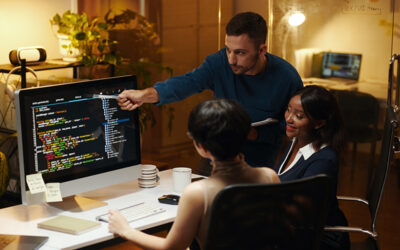Functional endoscopic sinus surgery is recommended and commonly performed for infectious and inflammatory sinus disease. The patients must have documented rhinosinusitis, and the surgery is recommended on the basis of a thorough history and a complete physical examination. Patients are usually those in whom appropriate medical treatment has failed.
The procedure can be performed on an outpatient basis under local or general anesthesia. Health insurance policies cover this service when it is medically necessary. The Centers for Medicare and Medicaid Services (CMS) released the 2014 Final Rule in November 2013, updating the hospital outpatient prospective payment system (OPPS). Now, Medicare reimburses outpatient services according to the updated OPPS which bases payment on Ambulatory Payment Classifications (APCs). So, the surgeons are required to use relevant codes to specify APC as well. Diagnostic codes are essential to ensure the surgical procedure was performed for a reimbursable health issue (ensure medically necessary procedure). Let’s take a look at some of the CPT codes and related APC and diagnostic codes.
CPT Codes and APC
- 30140: Submucous resection, inferior turbinate, partial or complete, any method (APC 0254)
- 30420: Rhinoplasty, primary; including major septal repair (APC 0256)
- 30520: Septoplasty or submucous resection, with or without cartilage scoring, contouring or replacement with graft (APC 0254)
- 30801: Cautery and/or ablation, mucosa of inferior turbinates, unilateral or bilateral, any method; superficial (APC 0252)
- 31000: Lavage by cannulation; maxillary sinus (antrum puncture or natural ostium) (APC 0251)
- 31002: Lavage by cannulation; sphenoid sinus (antrum puncture or natural ostium) (APC 0252)
- 31231: Nasal endoscopy, diagnostic, unilateral or bilateral (separate procedure) (APC 0071)
- 31237: Nasal/sinus endoscopy, surgical; with biopsy, polypectomy or debridements (separate procedure) (APC 0073)
- 31240: Nasal/sinus endoscopy, surgical; with concha bullosa resection (APC 0074)
- 31254: Nasal/sinus endoscopy, surgical; with ethmoidectomy, partial (anterior) (APC 0074)
- 31255: Nasal/sinus endoscopy, surgical; with ethmoidectomy, total (anterior and posterior) (APC 0075)
- 31256: Nasal/sinus endoscopy, surgical, with maxillary antrostomy (APC 0074)
- 31267: Nasal/sinus endoscopy, surgical, with maxillary antrostomy; with removal of tissue from maxillary sinus (APC 0074)
- 31276: Nasal/sinus endoscopy, surgical with frontal sinus exploration; with or without removal of tissue from frontal sinus (APC 0075)
- 31287: Nasal/sinus endoscopy, surgical, with sphenoidotomy (APC 0075)
- 31288: Nasal/sinus endoscopy, surgical, with sphenoidotomy; with removal of tissue from the sphenoid sinus (APC 0075)
- 31295: Nasal/sinus endoscopy, surgical; with dilation of maxillary sinus ostium (e.g. balloon dilation), transnasal or via canine fossa (APC 0075)
- 31296: Nasal/sinus endoscopy, surgical; with dilation of frontal sinus ostium (e.g. balloon dilation) (APC 0075)
- 31297: Nasal/sinus endoscopy, surgical; with dilation of sphenoid sinus ostium (e.g. balloon dilation) (APC 0074)
- 42830: Adenoidectomy, primary, younger than age 12 (APC 0256)
- 42831: Adenoidectomy, primary, age 12 or older (APC 0254)
- 42835: Adenoidectomy, secondary, younger than age 12 (APC 0254)
- 42836: Adenoidectomy, secondary, age 12 or over (APC 0254)
Related Diagnostic Codes
ICD-9
- 473.0: Chronic Maxillary Sinusitis
- 473.1: Chronic Frontal Sinusitis
- 473.2: Chronic Ethmoidal Sinusitis
- 473.3: Chronic Sphenoidal Sinusitis
- 473.8: Chronic Sinusitis, Not Elsewhere Classified (NEC)
- 473.9: Chronic Sinusitis, Not Otherwise Specified (NOS)
ICD-10
- J32.0: Chronic Maxillary Sinusitis
- J32.1: Chronic Frontal Sinusitis
- J32.2: Chronic Ethmoidal Sinusitis
- J32.3: Chronic Sphenoidal Sinusitis
- J32.4: Chronic Pansinusitis
- J32.8: Other Chronic Sinusitis
- J32.9: Chronic Sinusitis, Unspecified
Tips for Accurate Coding
- Use code 30140 only if the documentation indicates the mucosa was entered/incised and preserved and tissue and/or bone were removed. If there is a statement “excised the turbinate(s)”, it is not enough to consider the submucous resection of the inferior turbinate(s) and would not support 30140.
- Do not report 31254 – 31288 in conjunction with the balloon dilation codes, 31295-31297 for the procedures performed on the same sinus.
- Apply balloon dilation codes for cases in which a balloon catheter is the only instrument or tool used to create the opening and no tissue is removed.
- Use balloon dilation codes when tissue is displaced. If tissue and/or bone are removed or tissue is both displaced and removed, then see codes 31254-31288.
- Do not report 31295 in conjunction with 31233, 31256, or 31267 if performed on the same sinus.
- Do not report 31296 in conjunction with 31276 if performed on the same sinus.
- Do not report 31297 in conjunction with 31235, 31287, or 31288 if performed on the same sinus.
- Do not separately report a lavage code (31000 or 31002) with the balloon dilation codes.




